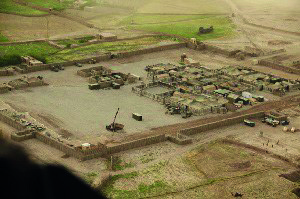Spanish Army Engineers in Land Forces "Strength, Loyalty, Courage"
Set up as an independient service by 1711, Spanish Army Engineers´ roots have always been firmly linked to these specialized troops leading the way through a new world, contributing to defend it by fortifying key settlements, or playing the most sacrificed war of mines assaulting and defending uncountable fortress all around the old Europe. Therefore, solid technical and scientific training, spirit of sacrifice, initiative, tenacity and loyalty are the traditional ideals of the Spanish Engineers; all that simbolized by a crowned tower into an oak and laurel wreath.

Recognized as the branch for technical, and therefore specialized, work; they assume the flexibility in the organization and the technical coordination of their tasks as the essential characteristics of their action. An action that, in accordance with the Doctrine for Employment of Army Forces, is expected to be:
Global, because it materializes over the entire Theatre of Operations by works that requires significant technical resources and broad implementation deadlines, and impacting both tactical and logistical aspects of the maneuver.
Durable, as it is usually materialized by constructions or destructions that have direct consequences over the manouver and can affect subsequent operations.
Progressive, because their tasks entrusted are usually continued, finished or put by others.
The variety and multiplicity of tasks they can present to engineers, carry that often drives do not have a permanent endowments material and specific means of engineers who require their implementation, therefore should be reinforced by upper echelons.
The execution of these tasks by units of engineers, should not involve excessive fragmentation of these. Consequently, the criteria of employment of the Spanish Engineers units is as followed:
Battalion: Fundamental unit of employment, as the smallest unit that has capacity of planning, have a park with provision of equipment, and be able to take several efforts.
Company: Fundamental unit of work because it has the ability to simultaneously perform several tasks autonomously.
Platoon: The smallest unit with the ability to conduct technical work. It is considered the employment basic unit as the smallest unit that can perform a task. In certain circumstances, sections will execute autonomous tasks planned and coordinated by the platoon leader.
Within the Spanish Army, Engineers are traditionally organized in Sappers and General Engineering units.
As combat support elements, Sappers units are organized and equipped to increase or complement the combat power of own forces by performing mobility, countermobility and survivability tasks. They are trained and prepared to make extensive use of expedited procedures to facilitate own maneuver and hinder the enemy's by actions leading to change terrain conditions.